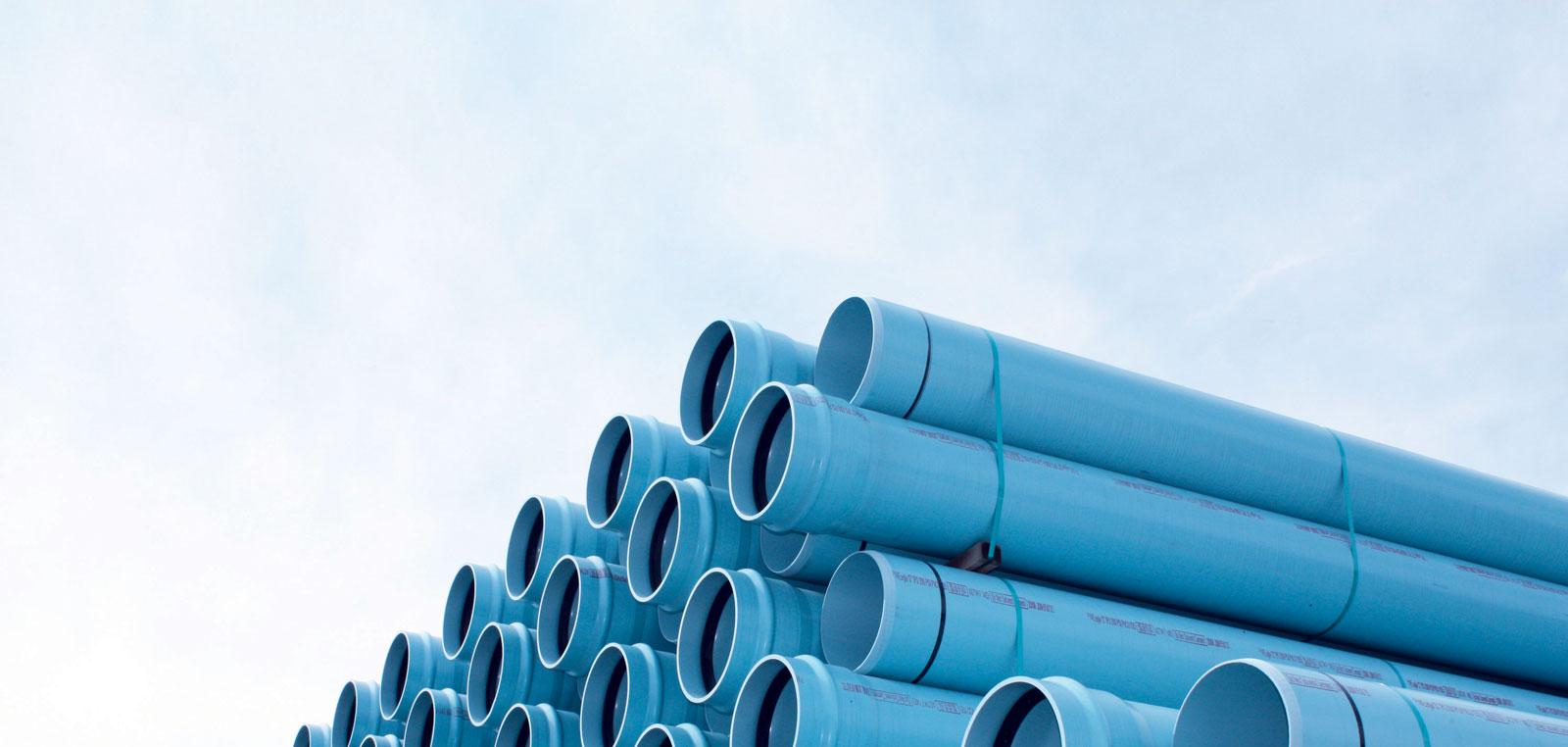Polyvinyl chloride (PVC) pipe is one of the most commonly used pipes for plumbing systems around the world. Made from PVC resin, the material is inexpensive, durable, and lightweight compared to other piping materials like copper and cast iron. PVC piping has been used widely for plumbing applications since the 1960s and continues to replace traditional piping in both residential and commercial construction projects.
Physical Properties of PVC
PVC piping is highly resistant to corrosion and chemicals. The material will not degrade when exposed to water, chemicals, or acidic or alkaline solutions. It is also unaffected by rot, rust, or deterioration—maintaining its structure for decades. In addition, PVC is non-conductive and does not support bacterial growth, making it a hygienic choice for potable water delivery systems. It is lightweight compared to metal pipes, reducing the labor and installation costs for plumbing projects. PVC pipes are available in different pressure ratings and schedules to suit various applications. Standard Schedule 40 and 80 pipes are commonly used in building construction.
Advantages in Installation
One of the major benefits of PVC Pipes is its ease of installation. The material is flexible enough to install around tight corners and bends without crimping or kinking like rigid copper pipes. PVC pipes have solvent-cement joints that create permanent leak-proof seals quickly. Contractors can assemble PVC systems faster than soldered copper or threaded iron pipes. The pipes also have push-fit coupling joints available that connect with simple hand pressure. This simplifies replacement and modification of existing PVC plumbing lines.
Durability and Lifespan
When properly installed, PVC pipes are expected to last 50 years or more without any maintenance requirements. The material does not corrode internally so there is no buildup of scale or debris inside the pipes over time. PVC water lines remain fully functional for their entire lifespan barring any external damages. Proper handling during transportation and installation is important to avoid breakage or weak points in the piping. When protected underground from UV exposure and ground movement, PVC pipes have an indefinite functional life.
Cost Effectiveness
The upfront material and installation costs of PVC plumbing are very competitive compared to alternatives. The pipes are widely available at construction supply stores and home improvement centers. Labor requirements are lower for assembling PVC systems which reduces project costs. Over the long run, PVC piping requires no repainting, recoating or electrical grounding like metal pipes. There are minimal maintenance or repair costs associated with PVC ensuring lower lifetime expenditure compared to copper or steel options. For these reasons, PVC has become the piping material of choice for new construction projects globally.
Applications of PVC Pipes
Some common applications where PVC pipes are extensively used include:
- Potable water delivery systems - Municipal water mains, household plumbing, irrigation systems
- Drain-waste-vent piping - Internal plumbing for toilets, sinks, showers carrying used water to sewer lines
- Sewer piping - Underground sewer lines connecting buildings to municipal sewage systems
- Industrial applications - Process piping, cooling water lines, chemical transportation in factories
- Electrical conduit - Enclosure for electrical wiring in place of metal conduit
- Gas piping - Distribution lines for natural gas and liquefied petroleum gas
- Solar heating systems - Delivery of heated water in solar water heaters
- Fire sprinkler lines - Pressurized piping network within buildings for fire suppression
With such a wide range of applications utilizing its corrosion resistance, durability and flexibility, PVC remains one of the most versatile piping materials globally. Architects, engineers and contractors continue to specify PVC for a diverse set of new construction and renovation projects.
Polyvinyl chloride piping systems have revolutionized modern plumbing due to the material's physical properties, ease of installation and long service life. The cost-effectiveness of PVC, both in initial installation and over the lifetime of a structure, makes it the preferred choice over metal alternatives for water distribution, drainage, industrial process piping and more. Continued innovations in joining technology and product standards will ensure PVC remains a mainstay piping material well into the future.
Get more insights on this topic: PVC Pipes



